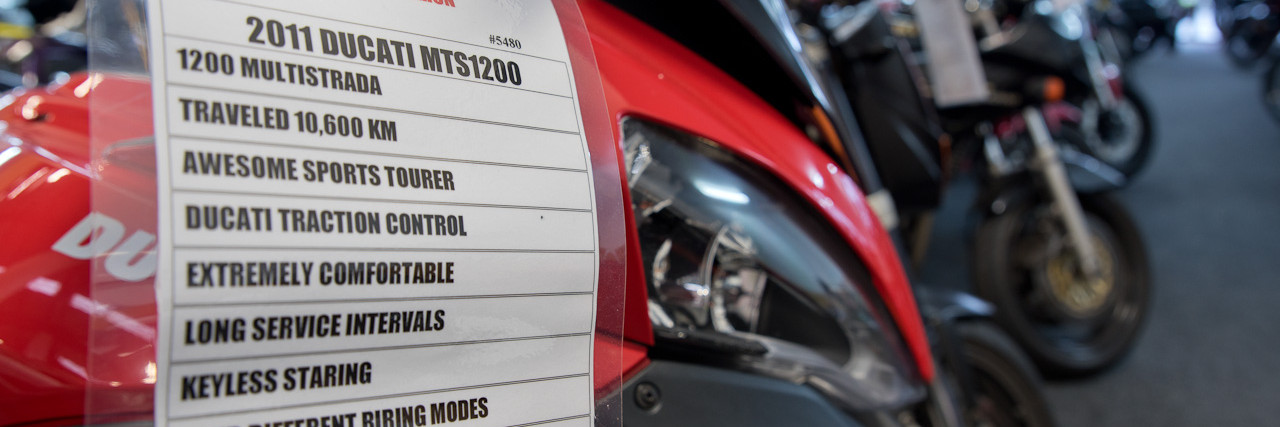Buying a used bike
Buying used rather than new comes with more risks. But with the right approach you can minimise these these risks.
There’s ‘used’ and ‘used’. A low-kilometres, single-owner machine that’s still under warranty is a far cry from a twenty-year-old hack with no service history. So what do you need to do to ensure you make a good purchase?
Who you’re buying from
The broad choices are from a dealership, privately or an online dealer. Each has pros and cons but the safest option is usually buying from a reputable dealership. Normally, the bike will have some sort of warranty, even if it’s just a few months. The Consumer Guarantees Act states that the bike must be as advertised, safe and fit for purpose.
The downside is that dealer prices are usually a little higher, and you’ll probably know nothing about the previous owner(s). A dealer purchase means the bike has almost certainly been professionally checked over, including its finance status, and serviced if needed. Trade-in might be an advantage too.
You have rights under the:
Buying privately
One upside of buying privately is that you’ll likely get to meet and make a judgement about the owner, and how they’ve looked after the bike. You can ask questions and you may be able to negotiate a keener price than at a dealership. Unless the bike is near-new, you won’t get a warranty, but even a private seller has a duty to reveal certain information. Some aspects of the Contractual Remedies Act will apply and if you are misled you can take the seller to the Disputes Tribunal.
Buying online
An online purchase means missing out on the face-to-face aspects. Some people even buy without seeing the bike, which is not recommended. A thorough mechanical checkover – preferably by a professional and certainly by someone competent – is a must whoever you’re buying from.
Things to do when buying a used bike
Check the specifications
Be sure to compare apples with apples. Used bikes will vary in specification, so ensure the bike you favour has the features you want. Things like antilock braking systems (ABS) and traction control are big safety features that might have been optional when new, and they add value.
Do your homework
As with a new bike, there’s more to cost than the price you pay up front. You’ll want to consider:
- Annual servicing costs for the coming few years. This will vary depending on the bike’s age and distance travelled, and who does the work. Investigate costs from the main dealer and a specialist mechanic.
- Annual rego.
- Replacement tyres, brake pads, the chain, etc –depending on the condition, they might need replacing soon.
Depreciation is the other big cost, but buying secondhand you’ll likely have an idea of how in-demand the bike is and how much slightly older bikes with more kilometres go for.
Finance check
Something else to check is whether any finance is still owing. If it is, the finance company can seize the bike. You’ll need the VIN, chassis and registration numbers, then you can check on the Personal Property Securities Register.
Personal Property Securities Register
You can also check facts about vehicles, vehicle history and money owing on CARJAM.




